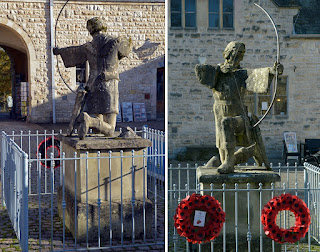Robin Hood has been dead for ten years. His son, Deering Hood, is living in Spain. Duke Del Roches is plotting to take the thrown. Baron Dorchester informs the aging men of Sherwood that Deering is coming back to England to stop Del Roches’ plan. Someone has informed Del Roches of their meeting. Their hut is surrounded, Dorchester is arrested, and Will Scarlet is killed.
Little John takes her to Sherwood. They are attacked and she proves herself a capable fighter. But they keep her sex a secret, and let the man first thought to be Deering, use her name. That man, along with herself, then visit Del Roches to learn more of his plans. He also spends the night with another Lady, killing her husband in a subsequent dual. Deering tells him she understands about “sins of the flesh” but is obviously jealous. Just when you thought it couldn’t get any more complicated, the man ends up in a prison cell next to Dorchester, and reveals himself to be Dorchester’s brother, Jamie. Not long now until the swordfight finale kicks in.
There are some nice ideas in the movie: The tunnel under the castle (there are many in real life Nottingham), the Prioress informer, and the sight of a bald Alan A Dale on the torture ramp. June Laverick, as Deering Hood, Robin Hood’s daughter, is more deserving of the lead role than anyone else in the cast. A pity it wasn’t promoted that way.























































